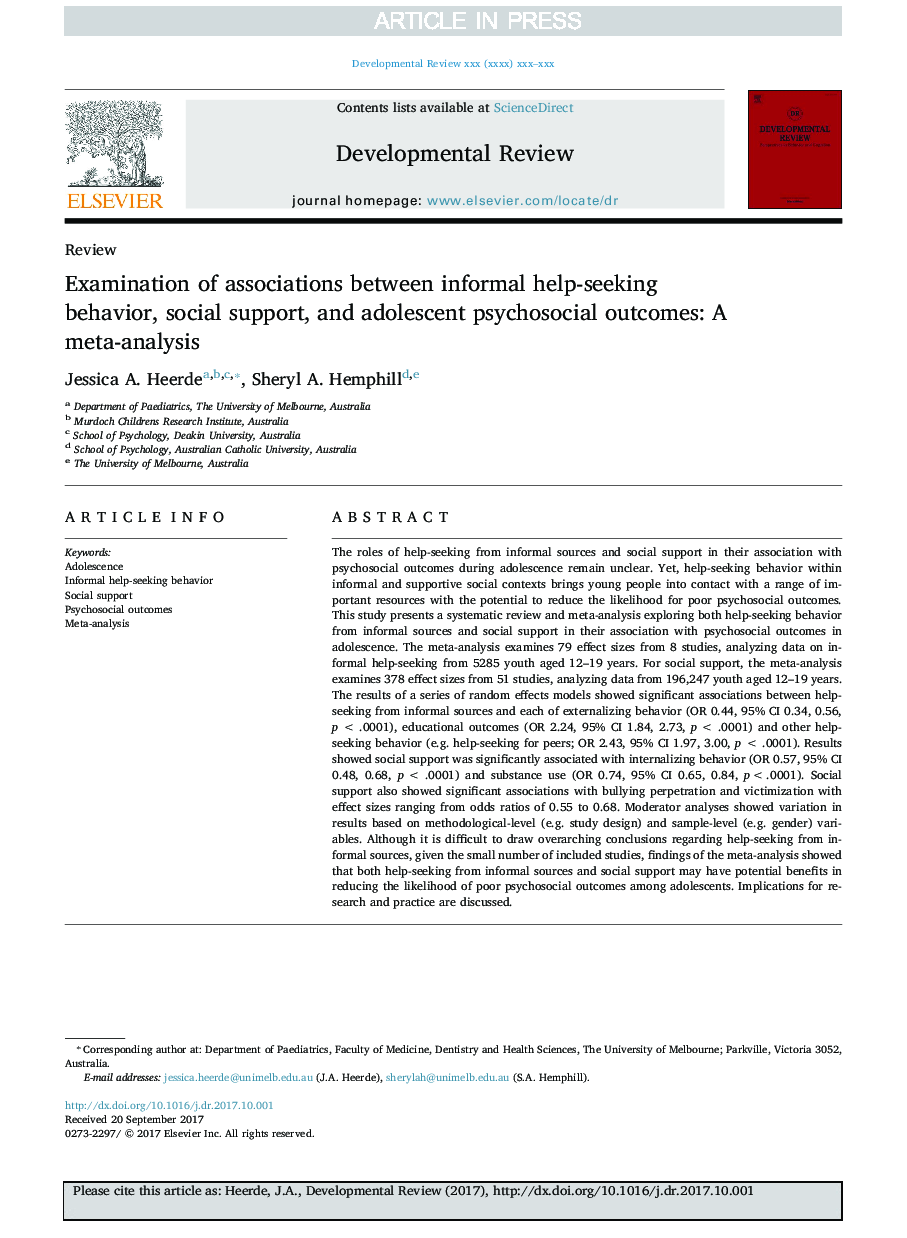| Article ID | Journal | Published Year | Pages | File Type |
|---|---|---|---|---|
| 6840395 | Developmental Review | 2018 | 19 Pages |
Abstract
The roles of help-seeking from informal sources and social support in their association with psychosocial outcomes during adolescence remain unclear. Yet, help-seeking behavior within informal and supportive social contexts brings young people into contact with a range of important resources with the potential to reduce the likelihood for poor psychosocial outcomes. This study presents a systematic review and meta-analysis exploring both help-seeking behavior from informal sources and social support in their association with psychosocial outcomes in adolescence. The meta-analysis examines 79 effect sizes from 8 studies, analyzing data on informal help-seeking from 5285 youth aged 12-19 years. For social support, the meta-analysis examines 378 effect sizes from 51 studies, analyzing data from 196,247 youth aged 12-19 years. The results of a series of random effects models showed significant associations between help-seeking from informal sources and each of externalizing behavior (OR 0.44, 95% CI 0.34, 0.56, pâ¯<â¯.0001), educational outcomes (OR 2.24, 95% CI 1.84, 2.73, pâ¯<â¯.0001) and other help-seeking behavior (e.g. help-seeking for peers; OR 2.43, 95% CI 1.97, 3.00, pâ¯<â¯.0001). Results showed social support was significantly associated with internalizing behavior (OR 0.57, 95% CI 0.48, 0.68, pâ¯<â¯.0001) and substance use (OR 0.74, 95% CI 0.65, 0.84, p < .0001). Social support also showed significant associations with bullying perpetration and victimization with effect sizes ranging from odds ratios of 0.55 to 0.68. Moderator analyses showed variation in results based on methodological-level (e.g. study design) and sample-level (e.g. gender) variables. Although it is difficult to draw overarching conclusions regarding help-seeking from informal sources, given the small number of included studies, findings of the meta-analysis showed that both help-seeking from informal sources and social support may have potential benefits in reducing the likelihood of poor psychosocial outcomes among adolescents. Implications for research and practice are discussed.
Related Topics
Social Sciences and Humanities
Psychology
Developmental and Educational Psychology
Authors
Jessica A. Heerde, Sheryl A. Hemphill,
